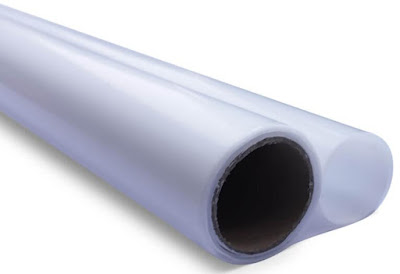Polytetrafluoroethylene (PTFE) is an engineered fluoropolymer. Oustanding resistance to chemicals is one of its primary attributes. A broad temperature range of -100°F to 500°F (-73°C to 260°C) make this hose material suitable for the majority of fluid and ambient temperature conditions found in industry.
Rubber convoluted PTFE hoses offer a non-stick, helically-shaped inner core which minimizes pressure drops and simplifies cleaning. These flexible hoses are designed to transport almost all substances and to withstand the most demanding conditions, including high velocity and pressure surges. The standard PTFE inner core can be replaced with an optional black non-conductive liner. All are available in bulk or fabricated assemblies.
FEATURES:
Conductive PTFE Lined Hose with Braided Stainless Steel Cover Features
• Lower convolutions for minimal pressure drop and ease of cleaning
• Inner core is convoluted non-stick PTFE
• Outer cover is stainless steel braid overwrap
• Non-stick contact surface will not contaminate contacted substances
• Not affected by weather and will not age in service within the recommended temperature and pressure ratings
• Withstands high velocity and pressure surges
• Unaffected by continuous flexing or vibration when used in accordance with minimum bend radius specifications
• Autoclavable and steam-cleanable
• Available in bulk or fabricated assemblies
• Lower convolutions for minimal pressure drop and ease of cleaning
• Inner core is convoluted non-stick PTFE
• Outer cover is stainless steel braid overwrap
• Non-stick contact surface will not contaminate contacted substances
• Not affected by weather and will not age in service within the recommended temperature and pressure ratings
• Withstands high velocity and pressure surges
• Unaffected by continuous flexing or vibration when used in accordance with minimum bend radius specifications
• Autoclavable and steam-cleanable
• Available in bulk or fabricated assemblies
Conductive PTFE Lined Hose with Braided Polypropylene Cover Features
• Inner core is low profile convoluted white PTFE
• Outer cover is bonded with a PTFE fiberglass braid and over braid with a polypropylene monofilament
• Each monofilament strand is twisted for abrasion and chemical-resistance
• Full vacuum rating on all sizes at 70°F
• Will not conduct internal heat as quickly as metallic braided hoses
• Conveys most all substances and withstands the environmental conditions in which it operates
• Available conductive liner for static dissipation
• Ease of cleanability
• Available in bulk or fabricated assemblies
• Inner core is low profile convoluted white PTFE
• Outer cover is bonded with a PTFE fiberglass braid and over braid with a polypropylene monofilament
• Each monofilament strand is twisted for abrasion and chemical-resistance
• Full vacuum rating on all sizes at 70°F
• Will not conduct internal heat as quickly as metallic braided hoses
• Conveys most all substances and withstands the environmental conditions in which it operates
• Available conductive liner for static dissipation
• Ease of cleanability
• Available in bulk or fabricated assemblies
APPLICATIONS
• Food processing
• Pharmaceutical processing
• Cosmetics
• Hot CIP solutions
• Chemical products
• Low pressure steam applications
• Pharmaceutical processing
• Cosmetics
• Hot CIP solutions
• Chemical products
• Low pressure steam applications
CONNECTIONS
• Broad variety fittings in 316L Stainless Steel, PTFE encapsulated or non-metallic materials
• Electropolished Stainless Steel fittings available
• Crimped fittings available in other high quality alloys
• Available with etched date or purchase order number on crimp collars
• Electropolished Stainless Steel fittings available
• Crimped fittings available in other high quality alloys
• Available with etched date or purchase order number on crimp collars










